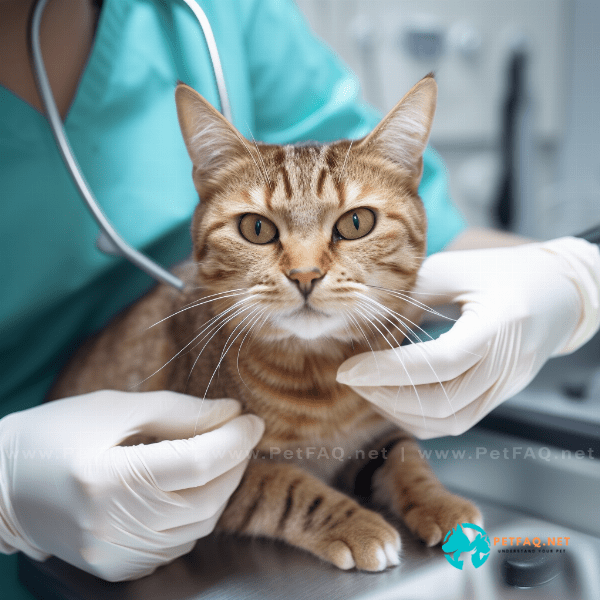Table of Contents
- Understanding Feline Oral Health
- Signs that Your Cat May Need Tooth Extraction
- The Tooth Extraction Procedure for Cats
- Aftercare and Recovery for Cats Post-Extraction
- Alternatives to Tooth Extraction for Feline Dental Issues
- Prevention and Maintenance of Feline Oral Health
- Risks and Complications Associated with Cat Tooth Extraction
- Finding a Qualified Feline Dentist for Your Cat
- The Importance of Regular Dental Check-Ups for Your Feline Friend
Understanding Feline Oral Health
Maintaining proper oral health is crucial for your cat’s overall well-being. Just like humans, cats can experience dental problems, such as gum disease, tooth decay, and tooth loss. These issues can lead to pain, discomfort, and even infections that can spread throughout the body. Understanding your cat’s oral health is the first step in providing the care they need to live a happy and healthy life.
The Anatomy of a Cat’s Mouth
A cat’s mouth is designed for hunting and killing prey. Their teeth are sharp and pointed, which helps them to grab and hold onto their prey. Adult cats have 30 teeth, which are divided into four types: incisors, canines, premolars, and molars. Each type of tooth plays a different role in the cat’s mouth, from biting and tearing to grinding and crushing.
Common Feline Dental Issues
Cats can develop a range of dental issues throughout their lifetime. One of the most common problems is periodontal disease, which occurs when bacteria build up on the teeth and gums, leading to inflammation and infection. Other dental issues include tooth decay, tooth resorption, and fractured teeth.
When Cat Tooth Extraction is Necessary
In some cases, dental issues in cats can become severe and require tooth extraction. This procedure involves removing a damaged or infected tooth from the cat’s mouth. It may be necessary if the tooth is causing pain, interfering with eating or drinking, or leading to other health problems. Cat tooth extraction is typically performed under general anesthesia to ensure the cat is comfortable and does not experience any pain.
Overall, understanding your cat’s oral health and providing proper care, including regular dental check-ups, can help prevent the need for cat tooth extraction and other dental procedures. However, if your cat does require a tooth extraction, it is important to seek the help of a qualified feline dentist to ensure the best possible outcome for your feline friend.
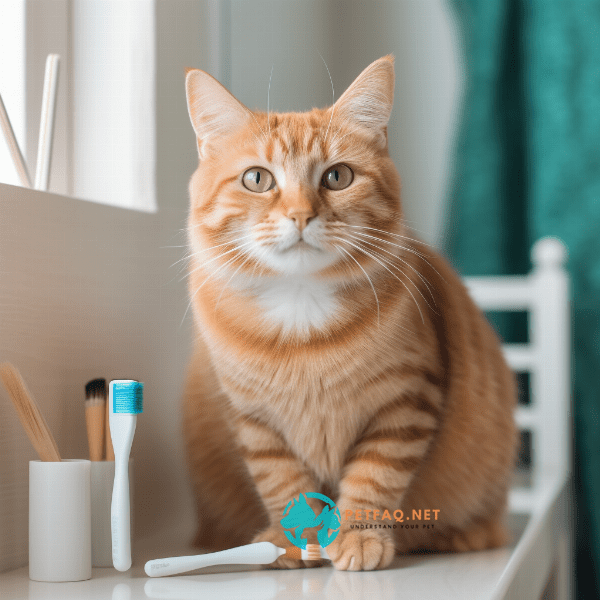
Signs that Your Cat May Need Tooth Extraction
Cats are known for hiding their pain, so it can be difficult to tell when they are experiencing dental issues that may require tooth extraction. However, there are some signs and symptoms to look out for that may indicate that your cat needs a tooth extraction.
Persistent Bad Breath
If your cat has persistent bad breath, even after brushing their teeth or providing dental treats, it could be a sign of periodontal disease or other dental issues that may require tooth extraction. The odor is often caused by bacteria that have built up in the mouth and can be a red flag for underlying dental problems.
Difficulty Eating or Dropping Food
Cats with dental issues may have difficulty eating or drop food while eating due to pain or discomfort in the mouth. If you notice your cat eating slower than usual or avoiding hard or crunchy foods, it may be time to have their teeth examined by a feline dentist. In some cases, a damaged or infected tooth may need to be extracted to alleviate the pain and allow your cat to eat normally again.
Pawing at the Mouth or Drooling
Cats with dental issues may paw at their mouth or drool excessively due to pain or discomfort. This behavior is a clear sign that something is wrong in their mouth and should not be ignored. In some cases, a cat may even develop a facial swelling or abscess, which can be very painful and require immediate attention.
If you notice any of these signs or symptoms in your cat, it is important to schedule a dental check-up with a qualified feline dentist. They can examine your cat’s mouth and determine if cat tooth extraction is necessary to treat any underlying dental issues and alleviate your cat’s pain and discomfort.
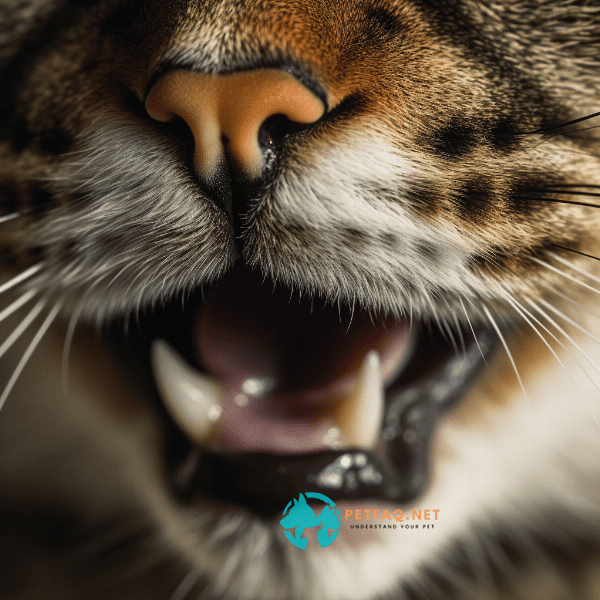
The Tooth Extraction Procedure for Cats
If your cat requires tooth extraction, it is important to understand what to expect during the procedure. Here is a general overview of what happens during cat tooth extraction:
Anesthesia Administration
Cat tooth extraction is typically performed under general anesthesia to ensure that the cat is comfortable and does not experience any pain during the procedure. The veterinarian will carefully monitor your cat’s vital signs to ensure their safety throughout the anesthesia administration.
Tooth Removal
Once the cat is under anesthesia, the veterinarian will carefully remove the damaged or infected tooth from the cat’s mouth using specialized dental instruments. The tooth will be gently rocked back and forth to loosen it from the surrounding tissues before being extracted.
Closure and Recovery
After the tooth has been extracted, the veterinarian will clean the extraction site and suture the surrounding tissues to promote healing. Your cat will be closely monitored as they wake up from anesthesia to ensure a smooth recovery.
Post-Extraction Care
After cat tooth extraction, it is important to follow the veterinarian’s post-operative care instructions carefully to ensure proper healing. This may include pain medication, a soft food diet, and limiting your cat’s activity for a few days. It is also important to monitor the extraction site for any signs of infection or complications, such as excessive bleeding, swelling, or discharge.
Overall, cat tooth extraction is a safe and routine procedure that can help alleviate your cat’s pain and discomfort caused by dental issues. By understanding the tooth extraction procedure and following proper post-operative care instructions, you can help ensure a smooth recovery for your feline friend.
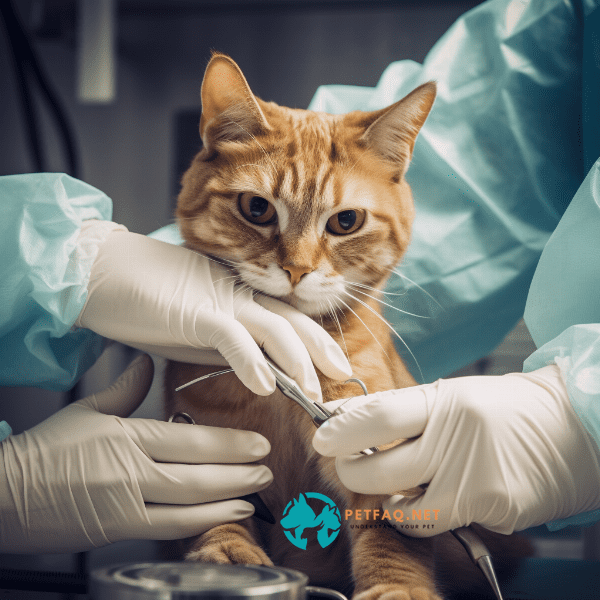
Aftercare and Recovery for Cats Post-Extraction
After your cat has undergone tooth extraction, it is important to provide proper aftercare to ensure a smooth and speedy recovery. Here are some tips to help your cat recover after cat tooth extraction:
Pain Management
Your cat may experience some pain or discomfort after tooth extraction, so it is important to provide pain medication as directed by the veterinarian. This will help keep your cat comfortable and reduce the risk of complications.
Soft Food Diet
To help your cat’s mouth heal after tooth extraction, it is important to feed them soft, moist food for the first few days after the procedure. Avoid feeding your cat hard or crunchy foods that may irritate the extraction site or cause pain.
Limit Activity
After tooth extraction, your cat may need to rest and limit their activity for a few days. This will help prevent injury or irritation to the extraction site and promote healing. Be sure to provide a comfortable and quiet space for your cat to rest during this time.
Monitor for Complications
It is important to monitor your cat for any signs of complications after tooth extraction. This may include excessive bleeding, swelling, discharge, or signs of pain or discomfort. If you notice any of these symptoms, contact your veterinarian right away.
Follow-Up Care
Your cat will likely need a follow-up appointment with the veterinarian after tooth extraction to ensure proper healing and monitor for any complications. Be sure to follow all post-operative care instructions carefully and attend all scheduled appointments.
By providing proper aftercare and monitoring your cat closely after tooth extraction, you can help ensure a smooth and speedy recovery. If you have any concerns or questions about post-operative care, be sure to contact your veterinarian for guidance.
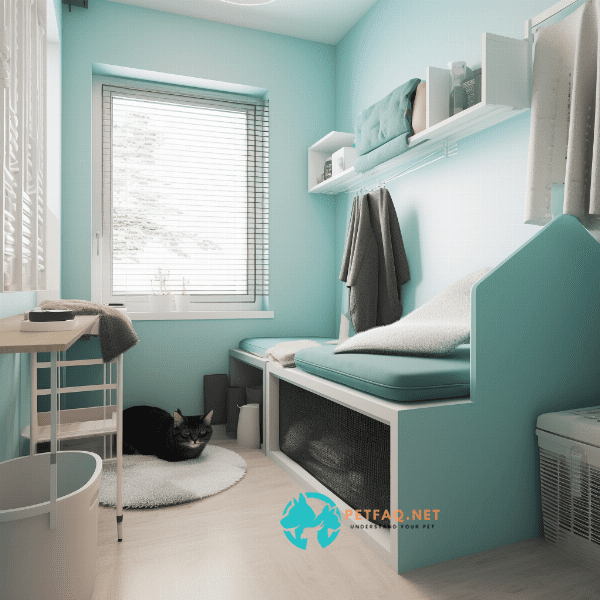
Alternatives to Tooth Extraction for Feline Dental Issues
While tooth extraction may be necessary in some cases of feline dental issues, there are alternative treatments available for less severe cases. Here are some alternatives to consider:
Root Canal Therapy
In some cases, a damaged or infected tooth may be treated with root canal therapy instead of extraction. This procedure involves removing the damaged pulp from the tooth and filling it with a special material to prevent further damage.
Tooth Reshaping
If a tooth is misshapen or causing discomfort but is otherwise healthy, tooth reshaping may be an option. This involves reshaping the tooth to alleviate discomfort and improve oral health.
Antibiotics
In some cases, antibiotics may be prescribed to treat infections or reduce inflammation in the mouth. While antibiotics alone cannot treat dental issues, they can be used in conjunction with other treatments to improve overall oral health.
It is important to discuss all treatment options with your veterinarian to determine the best course of action for your cat’s specific dental issue. In some cases, tooth extraction may be the best option for your cat’s health and well-being. However, by addressing dental issues early and exploring alternative treatments, you can help prevent the need for cat tooth extraction and promote overall feline oral health.
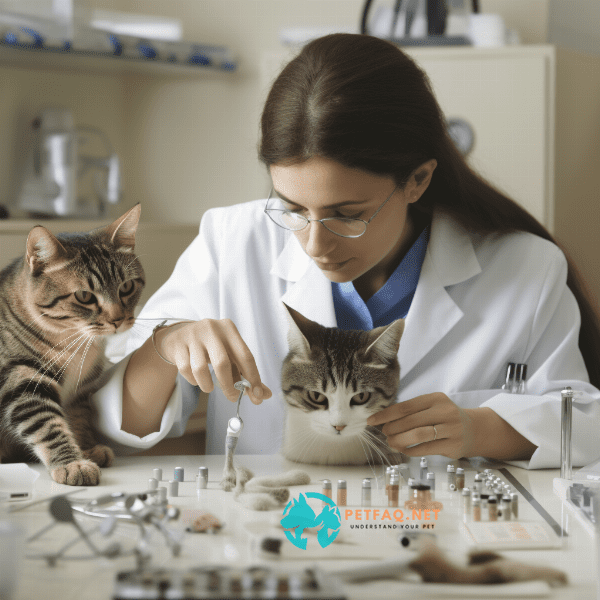
Prevention and Maintenance of Feline Oral Health
Preventing dental issues in cats is the best way to avoid the need for cat tooth extraction and other dental procedures. Here are some tips for maintaining your cat’s oral health:
Regular Dental Check-Ups
Regular dental check-ups with a qualified feline dentist can help detect dental issues early and prevent them from progressing. The veterinarian will examine your cat’s teeth and gums for signs of infection, inflammation, or other issues and recommend treatments as necessary.
Proper Nutrition
A healthy diet is important for overall feline health, including oral health. Providing your cat with a balanced diet that meets their nutritional needs can help promote strong teeth and gums and reduce the risk of dental issues.
Chew Toys
Chew toys can help keep your cat’s teeth and gums healthy by providing a natural way to remove plaque and tartar buildup. Be sure to choose chew toys that are safe and appropriate for your cat’s age and size.
Monitoring for Dental Issues
Monitoring your cat’s behavior and dental health is important for detecting dental issues early. Be sure to check your cat’s teeth and gums regularly for signs of inflammation, infection, or other issues and contact your veterinarian if you notice any changes.
By following these tips and maintaining proper feline oral health, you can help prevent the need for cat tooth extraction and other dental procedures. Remember to always consult with your veterinarian for personalized recommendations for your cat’s specific needs.
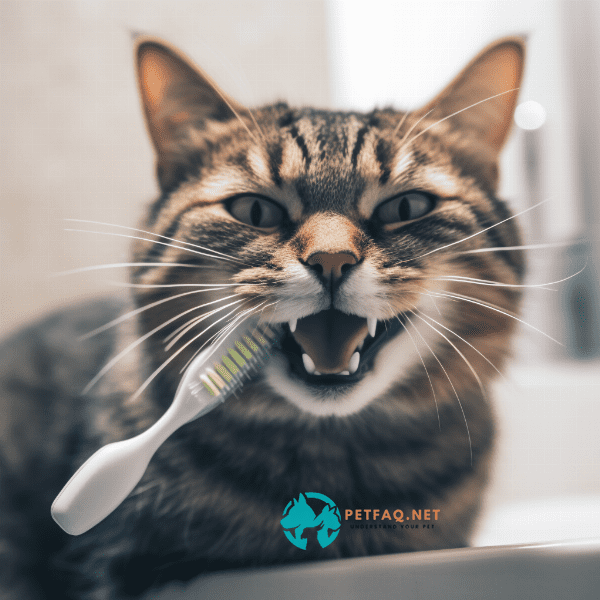
Risks and Complications Associated with Cat Tooth Extraction
While cat tooth extraction is a routine procedure, there are some risks and complications associated with it. Here are some potential risks to be aware of:
Anesthesia Risks
One of the main risks associated with cat tooth extraction is anesthesia. While modern anesthesia is safe for most cats, there is always a risk of complications, such as allergic reactions, respiratory issues, or cardiovascular problems.
Bleeding
Bleeding is a common complication after cat tooth extraction. While some bleeding is normal, excessive bleeding can be a sign of a more serious issue and should be addressed by a veterinarian.
Infection
Infection is another potential complication after cat tooth extraction. The extraction site is at risk for infection if proper aftercare instructions are not followed, or if the cat has a weakened immune system.
Nerve Damage
In rare cases, nerve damage can occur during cat tooth extraction. This can lead to numbness or loss of sensation in the face or jaw.
It is important to discuss these risks with your veterinarian and follow all post-operative care instructions carefully to reduce the risk of complications. If you notice any signs of bleeding, infection, or other issues after cat tooth extraction, be sure to contact your veterinarian immediately.
Overall, while there are risks associated with cat tooth extraction, it is a safe and routine procedure that can help alleviate your cat’s pain and discomfort caused by dental issues. By understanding the risks and monitoring your cat closely after the procedure, you can help ensure a smooth recovery and improve their overall oral health.

Finding a Qualified Feline Dentist for Your Cat
When it comes to your cat’s dental health, it is important to find a qualified feline dentist to provide the care they need. Here are some tips for finding a qualified feline dentist for your cat:
Research Credentials and Experience
When searching for a feline dentist, be sure to research their credentials and experience. Look for dentists who have specialized training and experience in feline dentistry, and who are licensed and certified in their field.
Ask for Referrals
Ask your veterinarian or other cat owners for referrals to qualified feline dentists in your area. Word-of-mouth recommendations can be a great way to find a dentist who has a proven track record of providing quality care.
Schedule a Consultation
Before scheduling any dental procedures, it is important to schedule a consultation with the feline dentist to discuss your cat’s specific needs and treatment options. This can help ensure that you are comfortable with the dentist and that they have a clear understanding of your cat’s dental health.
Check for Special Services
Some feline dentists offer specialized services, such as endodontics or orthodontics. If your cat requires a specific type of dental treatment, be sure to check if the dentist offers that service.
Consider Location and Cost
Location and cost are also important factors to consider when choosing a feline dentist. Look for a dentist who is conveniently located and who offers competitive pricing for their services.
By taking the time to research and find a qualified feline dentist for your cat, you can help ensure that they receive the best possible dental care. Remember to always discuss treatment options and any concerns with the dentist and follow all post-operative care instructions carefully to promote a speedy recovery.
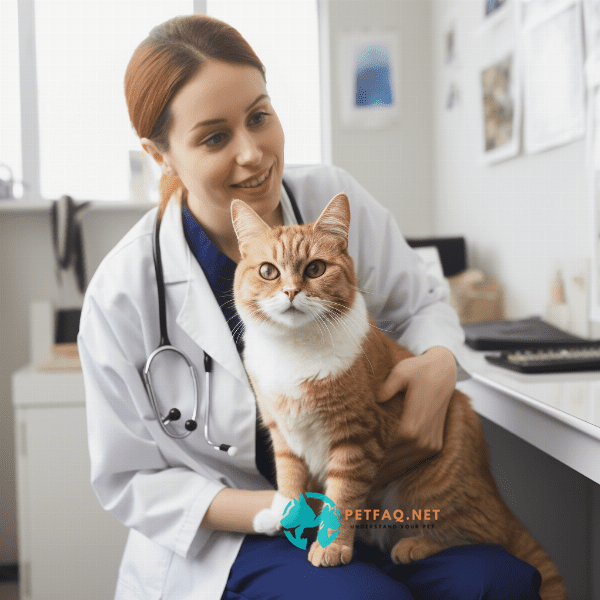
The Importance of Regular Dental Check-Ups for Your Feline Friend
Regular dental check-ups are an important part of maintaining your cat’s oral health and preventing the need for cat tooth extraction and other dental procedures. Here are some reasons why regular dental check-ups are important:
Prevention of Dental Issues
Regular dental check-ups can also help prevent dental issues from occurring in the first place. The veterinarian can provide recommendations for at-home dental care and recommend professional dental cleaning as necessary to reduce the risk of dental problems.
Improved Oral Health
Regular dental check-ups can help improve your cat’s overall oral health. By addressing dental issues early and maintaining proper oral hygiene, you can help keep your cat’s teeth and gums healthy and reduce the risk of complications.
Reduced Risk of Other Health Issues
Poor oral health can lead to other health issues in cats, such as heart disease or kidney problems. By maintaining proper oral health through regular dental check-ups, you can help reduce the risk of these and other health issues.
Overall, regular dental check-ups are an important part of maintaining your cat’s health and well-being. By scheduling regular appointments with a qualified feline dentist, you can help prevent the need for cat tooth extraction and other invasive dental procedures and promote overall feline oral health.
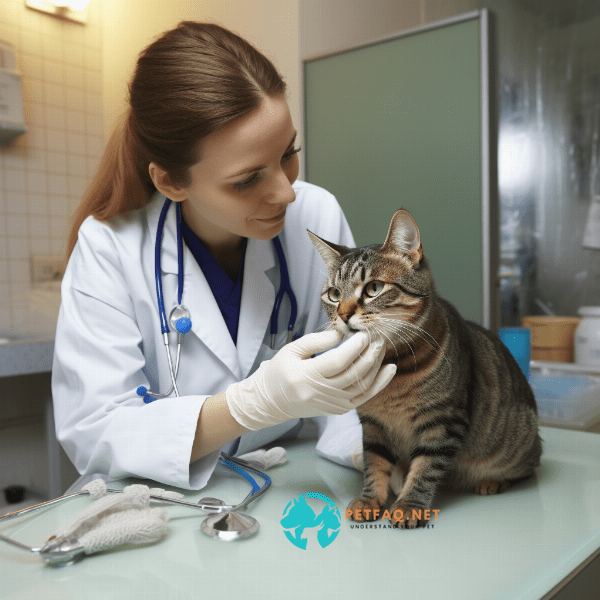
Frequently Asked Questions (FAQs) about Cat tooth extraction:
1. How much does a cat tooth extraction cost?2. How should I care for my cat after a tooth extraction?
3. Are there any alternatives to tooth extraction for dental problems in cats?
4. What types of dental problems in cats require tooth extraction?
5. How soon can my cat eat after a tooth extraction?



